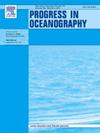圣安塔(佛得角)的黑珊瑚和柳珊瑚群落:多样性、分布和人口结构
IF 3.6
3区 地球科学
Q1 OCEANOGRAPHY
引用次数: 0
摘要
黑珊瑚和柳珊瑚组合是海洋生态系统的重要组成部分,提供了支持高度生物多样性的复杂栖息地。尽管它们很重要,但这些珊瑚群落在佛得角群岛仍未得到充分开发,这是一个具有重要生态价值的地区。本研究首次对圣安特本文章由计算机程序翻译,如有差异,请以英文原文为准。
Black coral and gorgonian assemblages of Santo Antão (Cabo Verde): diversity, distribution, and demographic structure
Black coral and gorgonian assemblages are vital components of marine ecosytems, providing complex habitats that support high biodiversity. Despite their importance, these coral communities remain underexplored in the Cabo Verde Archipelago, a region of significant ecological value. This study provides the first systematic assessment of black coral and gorgonian assemblages in Santo Antão, examining their distribution, density, size structure, and morpho-functional traits through in situ surveys.
Our findings identified 11 species of black corals and gorgonians,and three key patterns: (1) Coral assemblages in Santo Antão are divided into black coral-dominated, gorgonian-dominated, and mixed assemblages with high diversity, particularly in the Northeast (NE) and Southeast (SE) regions. (2) Large, bushy and/or unbranched erect black corals thrived in high-current environments, whereas large, planar gorgonians flourished in gentler hydrodynamic conditions. Notably, mean (± SD) densities of black corals, such as Stichopathes luetkeni Brook, 1889 (46.0 ± 50.5 colonies/m2) and Tanacetipathes spinescens Gray, 1857 (23.2 ± 15.5 colonies/m2), were among the highest reported globally. Gates of Eden (SE) emerged as the most coral-abundant location. (3) Functional richness (FRic) varied across locations, with distinct spatial patterns observed at Hanging Garden Flat (SE) and Cruzinha hotel (NW).Overall, the observed patterns in taxonomic (species richness, evenness, and Shannon-Wiener) and functional diversity (FRic) reinforce the presence of distinct assemblages across Santo Antão: high-diversity hotspots in the NE and SE regions, low-diversity communities dominated by a few species and traits in the NW, and variable patterns in the SW and S regions.
This study establishes a crucial baseline for the diversity and ecological role of blackcoral and gorgonians in Santo AntãoOur findings underscorethe need for target conservation strategies, including the establishment of marine protected areas (MPAs)regulatory measures and community-based conservation initiatives to safeguard these vital ecosystems.
求助全文
通过发布文献求助,成功后即可免费获取论文全文。
去求助
来源期刊

Progress in Oceanography
地学-海洋学
CiteScore
7.20
自引率
4.90%
发文量
138
审稿时长
3 months
期刊介绍:
Progress in Oceanography publishes the longer, more comprehensive papers that most oceanographers feel are necessary, on occasion, to do justice to their work. Contributions are generally either a review of an aspect of oceanography or a treatise on an expanding oceanographic subject. The articles cover the entire spectrum of disciplines within the science of oceanography. Occasionally volumes are devoted to collections of papers and conference proceedings of exceptional interest. Essential reading for all oceanographers.
 求助内容:
求助内容: 应助结果提醒方式:
应助结果提醒方式:


